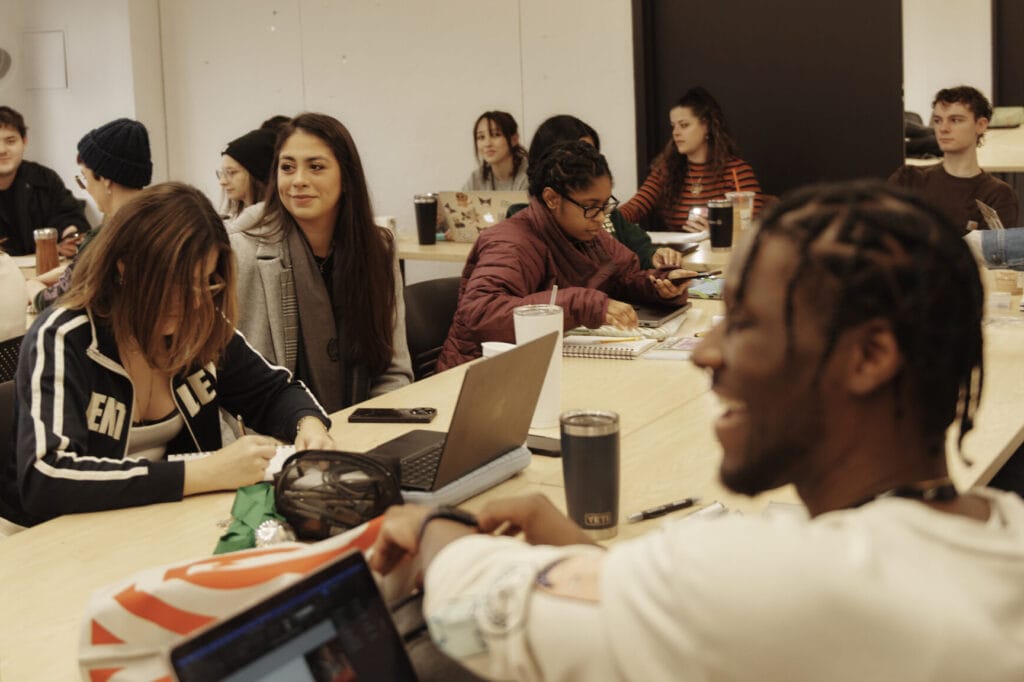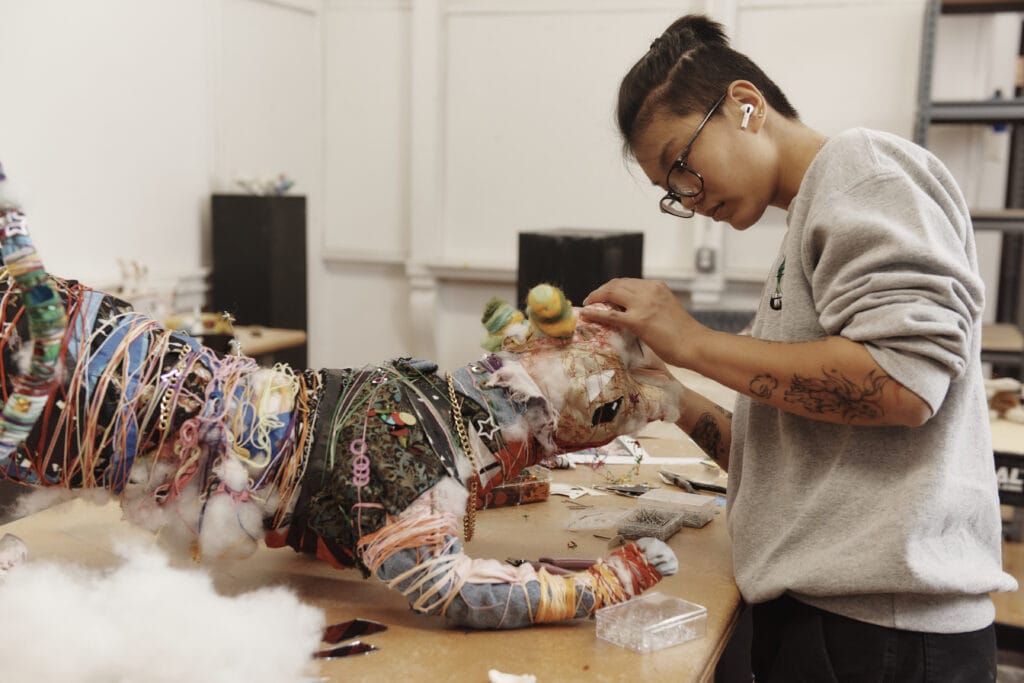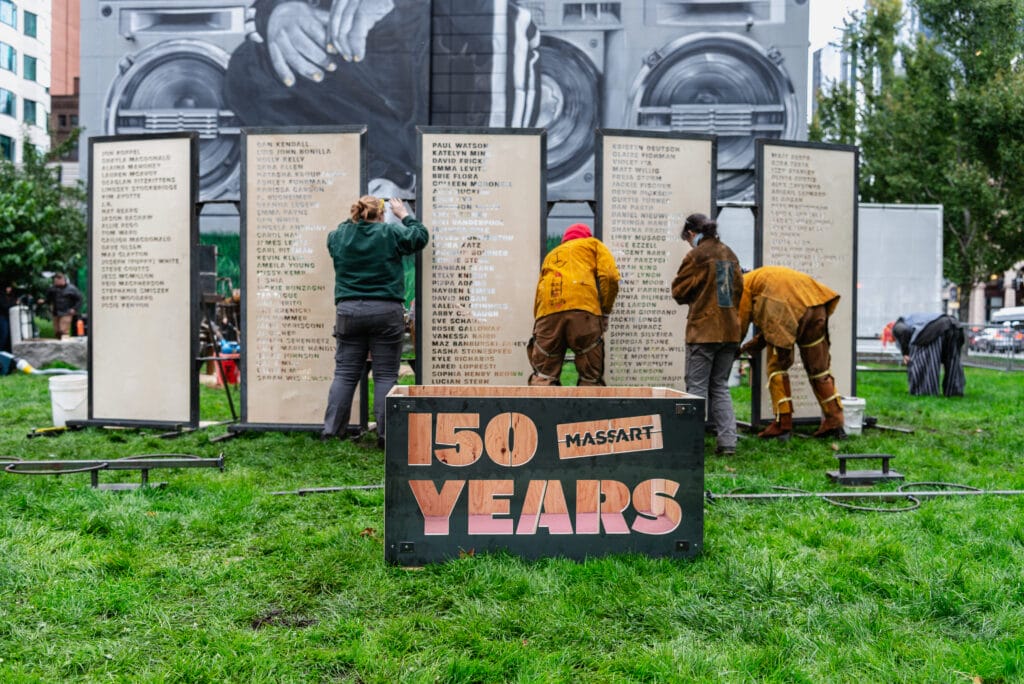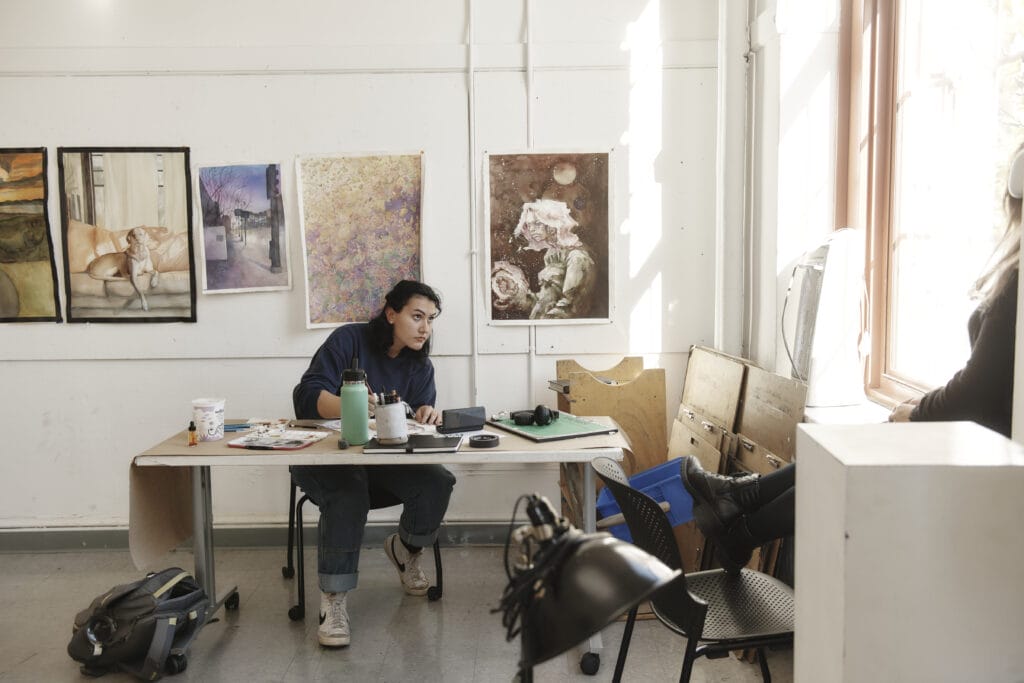MassArt Welcomes Boston Mayor Wu for Un-Monument Announcement
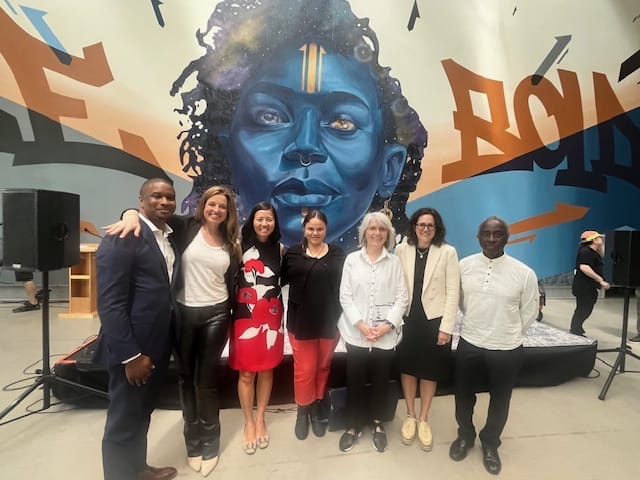
- Alumni in the News
- Campus News
- President's Office
On Thursday, July 18, MassArt and President Grant joined Boston Mayor Michelle Wu and local community members for the official unveiling of Boston’s newest public art initiative, Un-Monument/Re-Monument/De-Monument: Transforming Boston. Underwritten by the Mellon Foundation’s Monuments Project, this $3 million grant marks the largest investment in public art the City of Boston has ever received. Several MassArt alumni are among the grantees.
Overseen by the Mayor’s Office of Arts and Culture, Un-Monument will reimagine Boston’s landscape of monuments to historical figures through temporary public art installations, free public events, and educational content and activities. The city-wide collaboration includes artists, curatorial partners, and an Un-Monument Advisory Team, led by Kara Elliott-Ortega, Chief of Arts & Culture for the City of Boston, and Karin Goodfellow, Director of Public Art for the City of Boston.
As an Un-Monument partner, MassArt will play a critical part, developing educational and interpretive materials, signage, and an online educational component in support of the project. During her welcome remarks, President Grant emphasized the important role that public art and public education plays in understanding our past, present, and future. “We need to tell our whole history, our whole story,” she said.
Mayor Wu shared that she and her team were thrilled to be at MassArt, which she called an “historic but groundbreaking institution,” and were also “thrilled to be in partnership” with the College.
MassArt alumni contributing to Un-Monument works include: Cedric Douglas (‘11), Paul Goodnight (‘75), Elisa Hamilton (‘07), Ruth Henry (M’18), and honorary degree recipient Robert “ProBlak” Gibbs. Cicely Carew (‘05) and others also helped in the planning process.
Among the many installations that will be part of the new project is award-winning artist Roberto Mighty’s digital monument called We Were Here Too, created with video, audio, and photographic collages. It will bring attention and conversation to the fact that along with some 1,200 white people buried in the North End’s Copp’s Hill Burial Ground, there are about 1,000 Black colonists – both free and enslaved – in unmarked graves. Their neighborhood was called New Guinea, Mighty shared at the ceremony. They had occupations as seafarers, stevedores, and much more, and they “lived and worked here at the same time as Paul Revere, John Adams, Abigail Adams, and John Hancock.” In other words, Mighty said, “We were here, too.”

